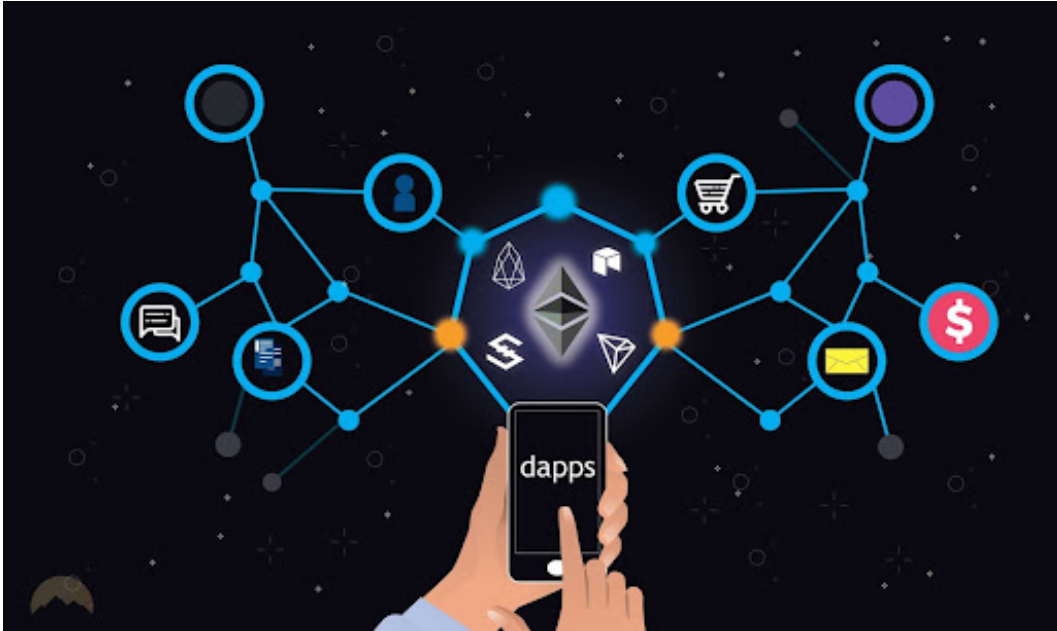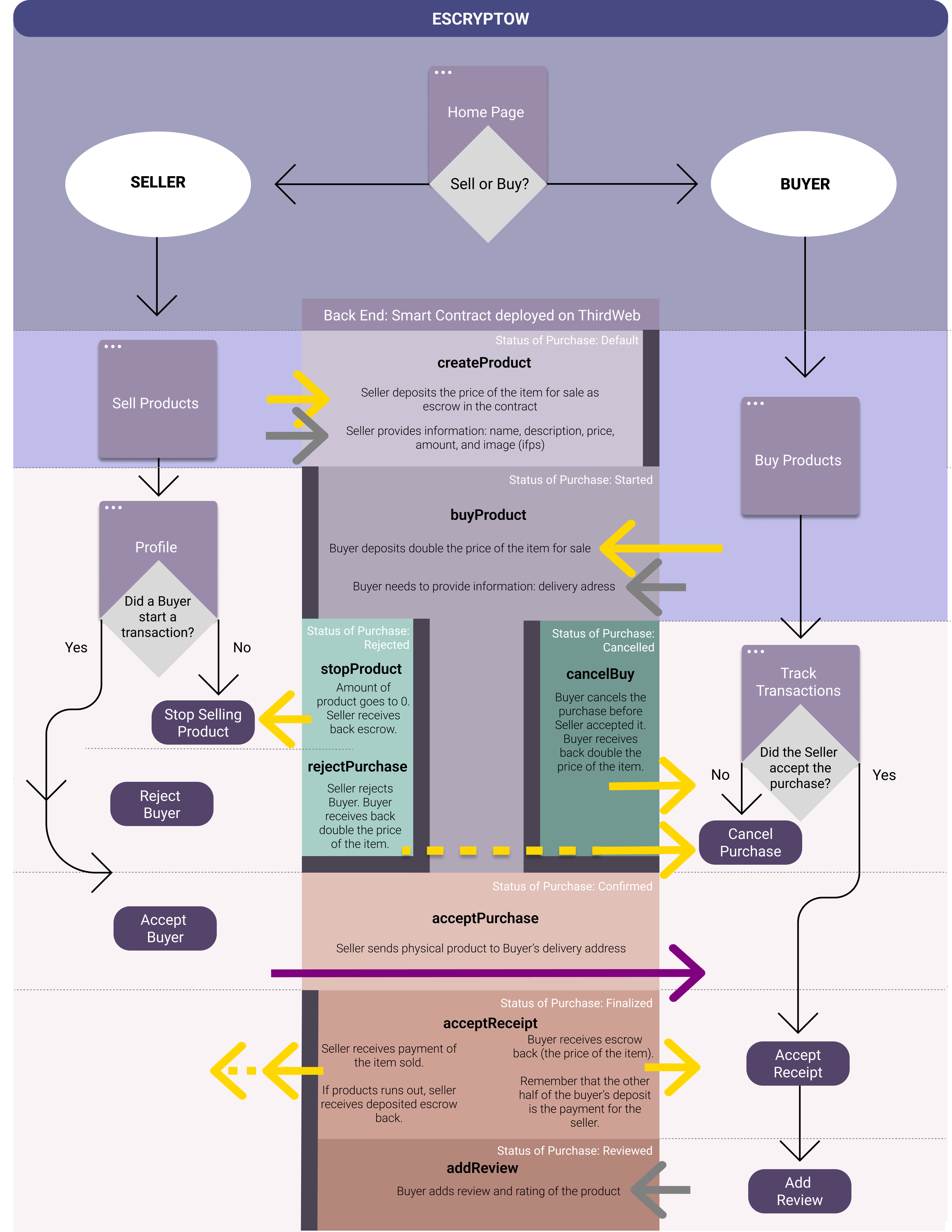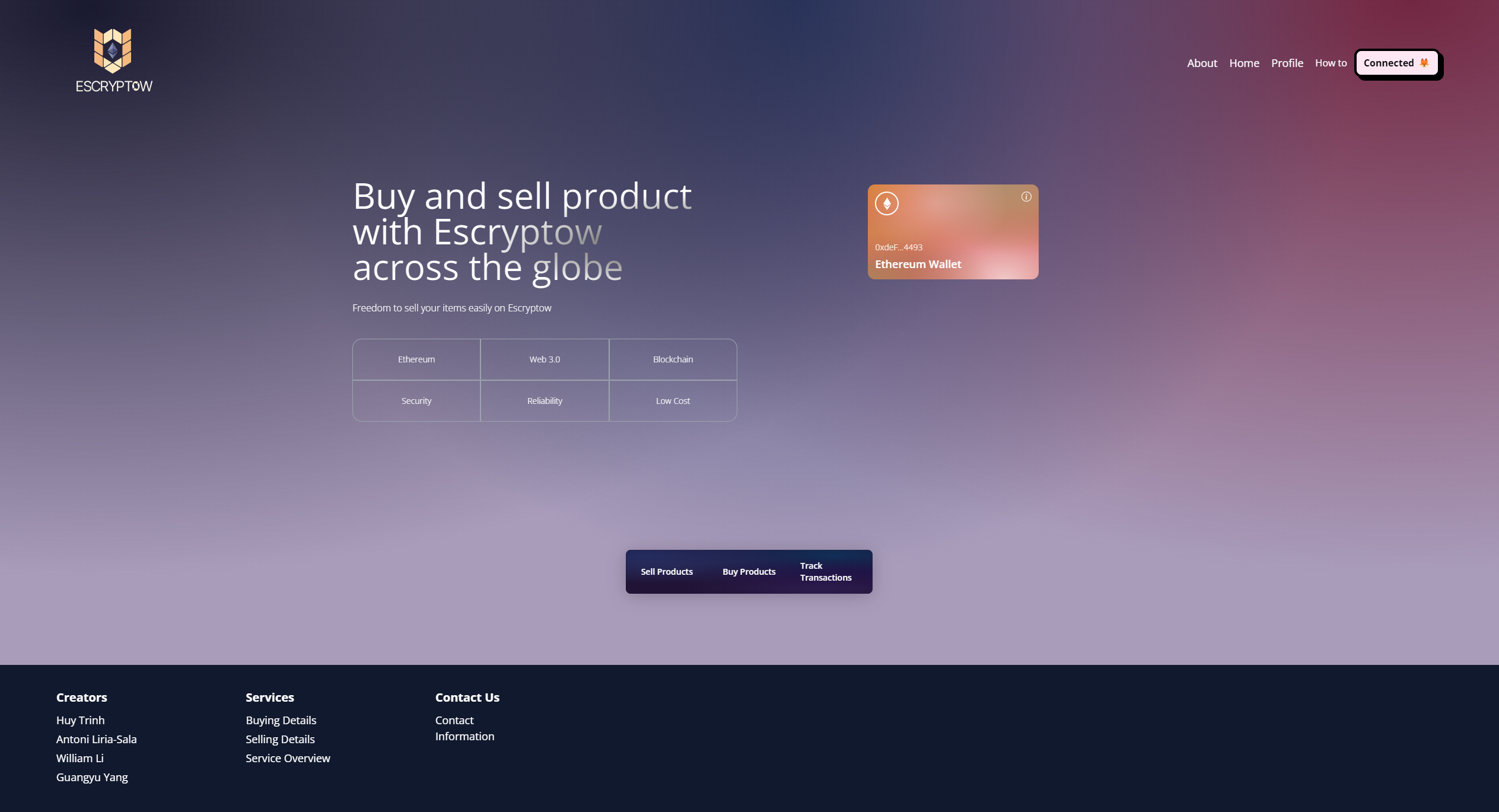Introduction
Conventional software and website services are facing challenges as Blockchain-based Applications (o.e. dApps) provide high data integrity, transparent workflow, and are essentially free from the control of single authority (e.g. IT corporations, service providers). The online marketplace and escrow system shows great potential to be incorporated with emerging blockchain technology. We aim to create a decentralized, blockchain-based online marketplace to provide secure online transactions and comfortable online shopping experiences for users while guaranteeing high degrees of user anonymity and autonomy.
We divided our task into two parallel portions, the front-end escrow client building, and the back-end smart contract development.To create the escrow system and user-interactive platform, we developed a smart contract with Solidity to accommodate transactions between multiple users, established a front-end client hosted on a website based on Thirdweb, and utilized the node-based interplanetary file system for data storage and sharing. Together, users can navigate the autonomous marketplace and shop as they would on a conventional shopping site with cryptocurrency, which should allow higher degrees of security and privacy and charge minimal service fees.


Smart Contract
The objective of our project was to provide advanced functionalities for the transaction system and multiple utility features for the website. This was achieved by developing a smart contract using Solidity and the Remix IDE, which was later deployed on the Goerli Ethereum testnet. It was designed to enable buyers and sellers to interact through different actions such as posting products for sale, making deposits, canceling transactions, and sending confirmations at each step. Additionally, the smart contract securely holds funds until the buyer receives the item and all conditions of the contract are met. The unit of transaction in the contract is Wei, which is the smallest denomination of ether.
We started with developing a contract that created a sub-contract for every transaction between seller and buyer. To lower the frequency of gas fees due to the high amount of transactions, we revised the contract to allow multiple sellers and buyers to transact under the same single contract. This was achieved through the use of mapping and structs to keep track of all current and past transactions. The smart contract achieves functionalities to enable creating products, joining transactions, and step-wise confirmations by buyers and sellers, respectively. To address some restrictions of the structure of variables (Structs) in Solidity, we differentiated between product information that should be visible in the interface and those used to keep track of user status in the backend. To facilitate the integration of contract and user client, we also adapted some of the view functions and state variables based on feedback from the frontend.
Website
The marketplace system comprises the front-end client that facilitates communication between the users and provides an easy way for users to connect to the various tools and applications (e.g. MetaMask, Etherscan, etc). Users will be guided to connect to their cryptocurrency wallet, after which they will be able to check connection status to the wallet, view a display of currently available products (like typical online shopping websites), and interact with actionable buttons for current transactions (e.g. join, confirm, cancel, etc).
The frontend web page is built upon Javascript with relevant libraries and tools (e.g. React and Vite). We also utilized certain blockchain specific applications to enhance usability and data retrieval efficiency, such as Thirdweb SDK and IPFS. Furthermore, we added elements with Tailwind CSS to achieve better visuality and interactivity of the website.

Conclusion
Throughout our progress, we have successfully developed iterations of smart contracts to accommodate evolving demands of functionalities of the escrow system. We designed and deployed the front end client as a ascetic, discoverable website, and we established stable connections to multiple other decentralized applications (e.g. Metamask, Etherscan) to ensure a fluent, comfortable user action flow when making transactions in the system. The team also put effort into user testing and refining the website in different considerations, such as shifting from built-in Struct to more scalable data storage schemas (i.e. ipfs) after discovering the issues in data retrieval.
We also look forward to accomplishing more actionables in the future iterations of the website. For example, we aim to expand the scale of user testing to test the capabilities of our client in handling increasing numbers of visitors and transactions. As we have implemented preliminary reviews and rating systems associated with products, we also plan to develop more comprehensive functionalities to fully expand these features.